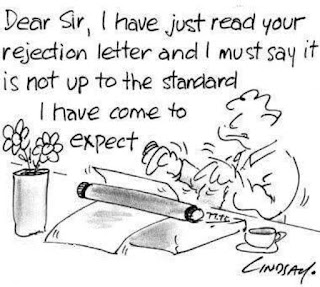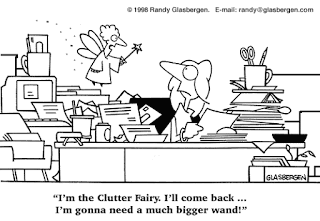One of my projects for this winter of COVID-19 is to clear clutter from my house. I’m starting with boxes of writing stuff I’ve accumulated during the past 30 years. So far, I’ve filled several recycling bins with papers, although I’m still holding onto more than I should.
Easy to dump are old query letters to publishers and their form rejection letters. I’ve never understood writers who talk of papering their den walls with rejection letters for inspiration. My instinct is to shove the depressing messages out of sight, although rejection has prompted me to write better, and still does. I am keeping the occasional rejections that complimented my writing and place them in a binder with other encouragements I received on my journey to publication.
I’m also throwing out critiques of chapters from novels that I subsequently revised and published, since there’s no point in rereading the comments now. In the pre-digital days of writing classes, we had to print copies of our submissions for each of our classmates to scrawl comments on. That’s a lot of paper for my recycling bin. Now and then a page of positive remarks by an instructor or writer-in-residence jumps out at me. I add these to my encouragement binder. It turns out this de-cluttering project is partly about jettisoning negative and irrelevant memories, while preserving ones that boost my spirit.
Stuff I can’t bring myself to toss out includes notes and newspaper clippings that might have value for future writing projects. I file these in boxes and folders with labels so I can find them easily when I want. If I ever move to a smaller place, I’ll instantly get rid of my folder for the mythology workshop I didn’t understand at the time, and still find baffling from my perusal of the notes. For now, these folders and boxes don’t take up much space on my shelf, where they’ll stay until I’m ready to dive into them or downsize.
The best finds are bits of clutter that might have an immediate use. I created folders for my current novel-in-progress, my next three story ideas, editing, and book promotion and tuck relevant notes and clippings into the folders. For instance, my germ of an idea for next mystery novel includes a ghost in ways I haven’t figured out yet. This prompted me to hold onto a comment by a creative writing instructor about Shakespeare’s Hamlet. ‘The ghost is a catalyst, and is the ghost telling the truth?’ When I sit down to write this novel, this question about Hamlet’s ghost might or might not trigger thoughts about the ghost in my story. If it doesn’t, I’ll send the instructor’s observation to the recycling bin or to another folder, where it might apply.
Also useful in the near future is advice for presenting my work in public. I’m collecting my scattered notes and handouts on this topic into one labelled box, along with printouts of past readings I’ve done. One tidbit of advice that I’ve taken to heart is to not read from the book itself. A printout of the scene enables me to enlarge the font for easier reading, revise the scene for audience interest and engage better with listeners than I can with my nose in the book. The next time I’m called on to do a literary reading I can leaf through printouts for a scene that suits the occasion and refresh myself on the advice, conveniently located in one place.
Nowadays, advice for public presentation tends to focus on Zoom and similar platforms. A couple of months ago, I attended an excellent webinar on this subject and made handwritten notes. The ‘Readings’ box will be the logical place for the notes, if I can find them in my recent piles of writing clutter.
Happy Holidays, however you celebrate this year!




